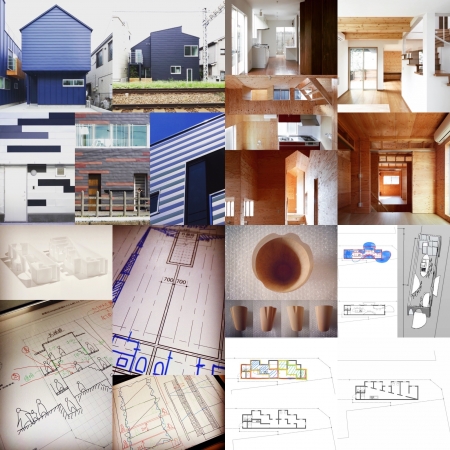建築と感触
どこかに座ろうとした時に、平で、できればお尻が痛くないような、軟らかい場所を探そうとするだろう。その時の判断材料はお尻と接するところの感触であり、その感触は実際に座る前に想像で、その想像は過去の経験や似たような感触から推測している。
だから、人は物に実際に触れなくても、その物の感触を感じることができる。このことは物をつくる際にはとても重要で、特に建築は人のスケールよりかなり大きい場合がほとんどだろうから、建築の部位で日常的に人が実際に触れることができる部分はかなり限られるので、建築という物を全体的に把握しようとする場合はほとんどが非接触であり、ただ、それは日常的に触れる場所と意識的に区別されることはなく、連続的で一体の物として頭の中で合成されるだろう。
そして、その把握は人のアクティビティに影響を与えることになる。その把握によって何かを選択し、その選択によりアクティビティが決まる。さらに、その人の気分や感情が介在することにより、そのアクティビティはその時その場所限定のものになる。
"Architecture and feel"
When you try to sit somewhere, you'll try to find a soft place that's flat and preferably doesn't hurt your butt. The judgment material at that time is the feeling of contact with the buttocks, and that feeling is imagined before actually sitting, and that imagination is inferred from past experience and similar feelings.
Therefore, a person can feel the object without actually touching it. This is very important when making things, especially since architecture is often much larger than a person's scale, so the parts of the building that people can actually touch on a daily basis are quite limited. Most of the time when trying to grasp the whole thing of architecture, it is non-contact, but it is not consciously distinguished from the place where it is touched on a daily basis, and it is in my head as a continuous and one thing Will be synthesized in.
And that grasp will affect the activity of people. The grasp determines something, and that selection determines the activity. In addition, the intervening mood and emotions of the person make the activity then and locally limited.


